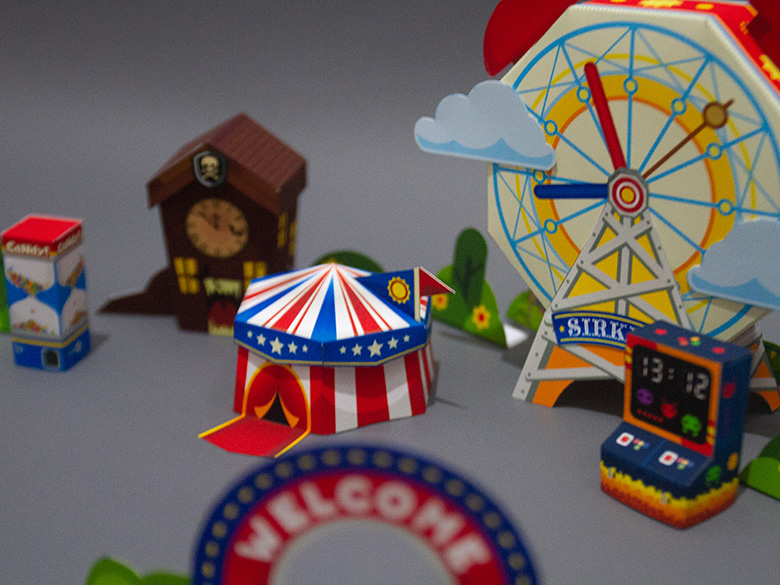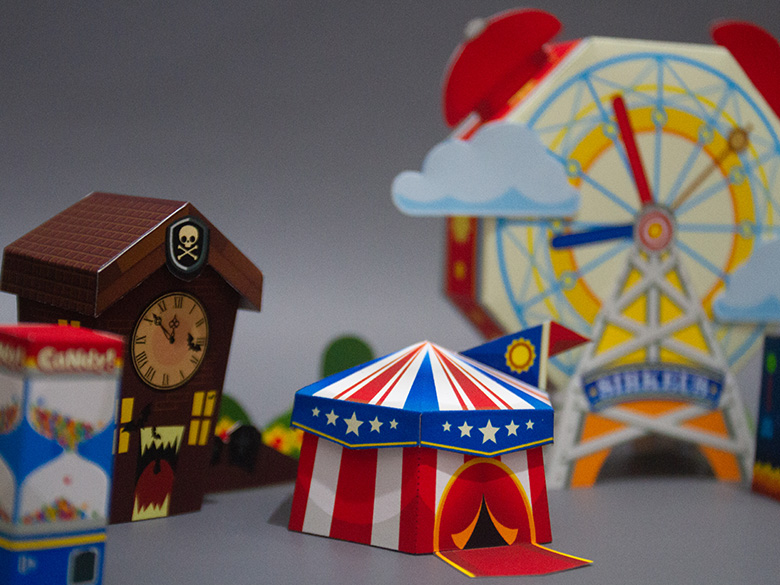Original Papertoy : Salazad
Papertoy Usage
All paper toys patterns in this site are for personal use only !
Please don’t use it for commercial purpose.
Thanks! You are Awesome!
Times Park
Papertoys
Time
Time is the indefinite continued progress of existence and events that occur in an apparently irreversible succession from the past, through the present, to the future. Time is a component quantity of various measurements used to sequence events, to compare the duration of events or the intervals between them, and to quantify rates of change of quantities in material reality or in the conscious experience. Time is often referred to as a fourth dimension, along with three spatial dimensions.
Time has long been an important subject of study in religion, philosophy, and science, but defining it in a manner applicable to all fields without circularity has consistently eluded scholars. Nevertheless, diverse fields such as business, industry, sports, the sciences, and the performing arts all incorporate some notion of time into their respective measuring systems.
Clock
A clock is an instrument used to measure, keep, and indicate time. The clock is one of the oldest human inventions, meeting the need to measure intervals of time shorter than the natural units: the day, the lunar month, and the year. Devices operating on several physical processes have been used over the millennia.
Some predecessors to the modern clock may be considered as “clocks” that are based on movement in nature: A sundial shows the time by displaying the position of a shadow on a flat surface. There is a range of duration timers, a well-known example being the hourglass. Water clocks, along with the sundials, are possibly the oldest time-measuring instruments. A major advance occurred with the invention of the verge escapement, which made possible the first mechanical clocks around 1300 in Europe, which kept time with oscillating timekeepers like balance wheels.
Traditionally in horology, the term clock was used for a striking clock, while a clock that did not strike the hours audibly was called a timepiece. In general usage today, a “clock” refers to any device for measuring and displaying the time. Watches and other timepieces that can be carried on one’s person are often distinguished from clocks. Spring-driven clocks appeared during the 15th century. During the 15th and 16th centuries, clockmaking flourished. The next development in accuracy occurred after 1656 with the invention of the pendulum clock. A major stimulus to improving the accuracy and reliability of clocks was the importance of precise time-keeping for navigation. The electric clock was patented in 1840.
The development of electronics in the 20th century led to clocks with no clockwork parts at all.
The timekeeping element in every modern clock is a harmonic oscillator, a physical object (resonator) that vibrates or oscillates at a particular frequency. This object can be a pendulum, a tuning fork, a quartz crystal, or the vibration of electrons in atoms as they emit microwaves.
Clocks have different ways of displaying the time. Analog clocks indicate time with a traditional clock face, with moving hands. Digital clocks display a numeric representation of time. Two numbering systems are in use; 24-hour time notation and 12-hour notation. Most digital clocks use electronic mechanisms and LCD, LED, or VFD displays. For the blind and use over telephones, speaking clocks state the time audibly in words. There are also clocks for the blind that have displays that can be read by touch. The study of timekeeping is known as horology.
source : Wikipedia




